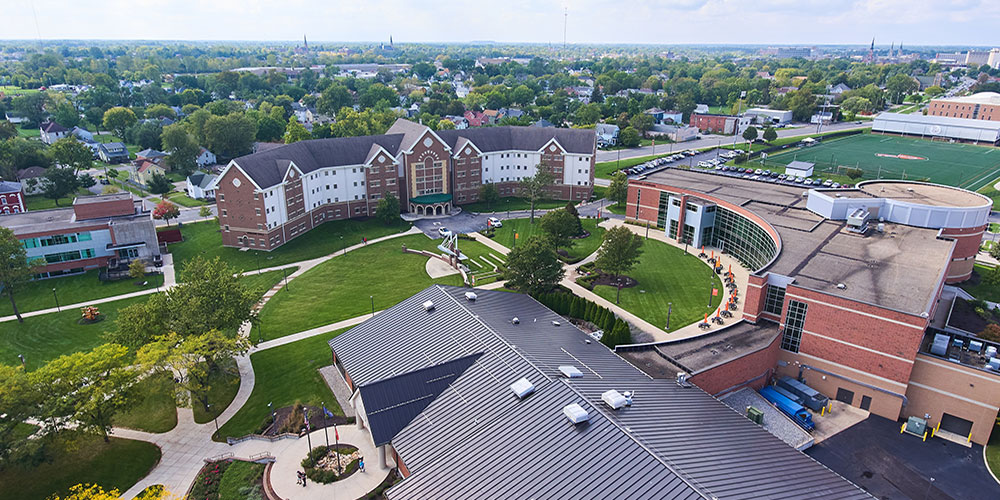The views expressed by guest bloggers and contributors are those of the authors and do not necessarily represent the views of, and should not be attributed to, Campus Safety magazine.
The recent tragedy at Michigan State University where a deranged killer simply walked onto campus and into several school buildings and attacked innocent people is an example of the danger of the “open campus.”
This type of campus is popular at many universities, private schools, and some public schools. It offers the students and staff a feeling of freedom that lends itself to learning and personal expression. It also makes a statement that says, “This is a safe place.”
The question that must be asked though is this: Is an open campus really safe?
I have conducted threat assessments for many schools, both public and private, and I have marveled at this open campus concept in this day and age — a time when active shooter/active killer attacks are on the rise across the nation. Attacks increased from 21 in 2019 to 61 in 2022.
The open campus concept certainly implies the campus is not a dangerous place, but as we just saw in Michigan, it really can be. Every school and university must take security very seriously today, and that includes ending the open campus concept and providing students, staff, and visitors with as much security as possible.
Many schools are enclosed campuses, meaning the property encompasses all the schools’ buildings and facilities. This kind of campus is easier to secure as it is self-contained and not spread out within the surrounding community. Other schools are part of a larger community, and their buildings are interspersed among other township or city property, making it harder to secure by its very nature.
To try and provide as much security as possible to both kinds of campuses, here’s what I suggest as a start to quickly make open campuses safer:
- Provide fencing, if possible, to further secure the property. If this has to be done in segments then so be it — it is a long-term capital improvement project.
- Identify technology that can help secure your perimeter, like electronic radar or light beam fencing. This product allows a radar or light beam to be used in place of a hard fence. The perimeter lines are set up with the technology, and if someone crosses the property line, an alert is sent to security.
- Virtual guarding is a new technology that is transforming campus security. Virtual guarding uses AI cameras set to specific sensitivities to can create an alert when a person crosses a property line and not a raccoon. The alert goes to a central station where a live, trained security officer can see the camera and what caused the alert. The security officer can then talk to the person via the camera, call the police, or take other security actions. This is all done at about half the cost of a regular in-person security guard, and it never misses anything or sleeps.
- Electronic reporting stations are another new technology that can help secure any area and speed up the call for help. This kind of system uses a wall-mounted device with a built-in cell phone. In an emergency, a student or staff member hits a “Lockdown Button” on the device which triggers an alert to security and local police. A cell phone built into the unit is removed by the person initiating the alert. This cell phone provides GPS coordinates of the caller, allows for two-way immediate communication, and a camera opens on the phone to record what’s happening. Law enforcement and security personnel can see and hear exactly what the caller sees. The caller can take the phone with them if they have to flee to keep providing information to first responders.
- Set up a security booth at all entrances and have in-person security officers monitor the vehicular and pedestrian traffic onto the property.
- All students, staff, and authorized visitors should have ID on lanyards to identify them as permitted on campus.
- Every building should be secured with a swipe card or fob access. This will provide immediate added security as only authorized people can get into any of the school’s buildings. In an emergency, students and staff can quickly retreat into a secured building with the swipe of a card. Unauthorized people, like the killer in Michigan, could not just walk into a building and begin an attack.
- Apply security glazing film to all first-floor doors and window glass. Start with door glass first and continue until all first-floor glass is secure.
- Provide all staff and students with quality training on how to respond to violence.
These suggestions are just the beginning of things that can and should be done on every campus. A good way to determine if any of these solutions are right for you is through a quality threat assessment.
Joseph Pangaro is a retired police lieutenant from Ocean Township, N.J. and the former director of school safety and security for a large school district in New Jersey. He is a Certified Public Manager (CPM) and the owner and CEO of True Security Design. He can be reached at [email protected].













